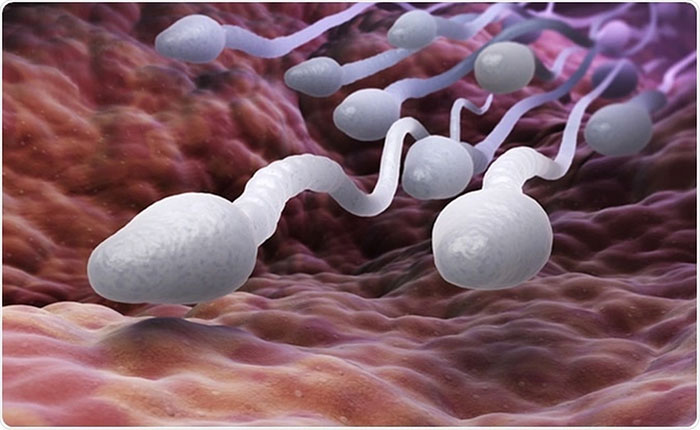New discovery: Human sperm swimming defies Newton's laws
Scientists have observed some microorganisms, including human sperm, moving in ways that contradict Newton's third law.
Specifically, researchers at Kyoto University (Japan) identified a property called strange elasticity in many creatures, they swim without losing energy . This discovery could help in the design of future micro-robots.
Classical physics is the backbone of our understanding of the world, and it is based on fundamental laws that describe the behavior of matter at all scales except the subatomic scale.

Human sperm swimming defies Newton's Third Law. (Illustration: Futura Science).
In the 17th century, Isaac Newton, researched and declared a law that is considered unshakable in the field of physics, Newton's Third Law .
According to this law, for every action force there is always a reaction force of equal magnitude.
An easier illustration of this law is that if a person exerts a force on a wall, the wall will exert an equal and opposite pressure, making it impossible for the person to pass through it.
However, physicists have observed phenomena that seem to defy this law. In this context, the act of pushing an object is unlikely to produce an equal and opposite reaction.
This means that contrary to what we have always been taught, scientists speculate, there may be many situations where forces do not necessarily balance each other.
Algae and human sperm
Cell movement, especially at the microscopic (ultra-small) scale , is a complex phenomenon that depends on many factors, including the interaction between the cell and its fluid environment.
The study, led by scientist Kenta Ishimoto and his team at Kyoto University, highlighted these behaviors in two types of organisms including human sperm and the algae Chlamydomonas .
Although they are very different, they share one common feature, using flagella (hairs) to move.
The team identified a unique feature of these flagella: they possess "strange elasticity."
Unlike normal elasticity, where an object returns to its original shape after being deformed, exotic elasticity allows the object to retain some of its deformation, which is beneficial for motion in a fluid.
This strange elasticity is essential for cells because it allows them to move efficiently without wasting energy. In other words, even though the surrounding fluid creates resistance, the strange elasticity of the flagellum allows the cell to continue moving with minimal energy loss.
This discovery allows scientists to identify the traits, adaptations, and evolutions that give these microorganisms an advantage in their environment, defying Newton's laws.
Such a tool would be invaluable to researchers, facilitating research, collaboration, and paving the way for new discoveries in biophysics. The authors believe that these advances will influence the design of microscopic swimming robots.
- Strange swimming patterns of sperm
- Math formula determines how the male sperm swimming
- New discoveries about the
- 6 weird and interesting facts about 'sperm'
- Complete decoding the human sperm genome
- Human sperm move poorly in zero gravity
- Interesting surprises you never knew about sperm
- Why does the United States export most sperm in the world?
- Successful production of sperm from human skin
- Your skin can be attacked by bacteria in just 10 minutes of swimming in the sea
- The meaning of physical laws for Olympic athletes
- Sperm are produced like?
 13 causes of non-itchy rash
13 causes of non-itchy rash How the mouse with human ears changed the world?
How the mouse with human ears changed the world? The truth about 'fried rice syndrome!
The truth about 'fried rice syndrome! What is dental implant?
What is dental implant?